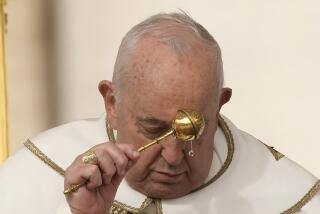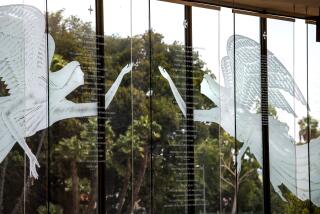New Presiding Bishop of Church : Episcopalian Hails ‘Easter Community’
- Share via
Presiding Bishop Edmond Lee Browning of the Episcopal Church has been in office just two months but already has an “Easter impression” of the church he leads.
“These first impressions from the listening process reaffirm for me the fact that we, as the church, are an Easter community nurtured by the hope of the Resurrection,” Browning said in an Easter message. “It is with this sense of hope that I approach this Easter.”
While Easter, grounded in the belief of the miraculous resurrection from the dead of Jesus, is the most central dogma of the Christian faith system, it often takes a back seat to the more secularized celebration of Christmas.
Despite the challenges of science and scholars to the literalness of Jesus’ resurrection, however, millions of Christians around the world continue to mark Easter as the holiest day in the church year--a day that, as Browning said, creates in mystery and faith a different kind of community.
“We must not dawdle around the events of Easter,” Browning said. “The risen Christ confronts us to move out in hope to proclaim, to heal, to reconcile and to teach, not with any sense of triumphalism but with compassion.
“From the corporate board room to the shanties of the homeless, from the command stations of missile silos to hospital beds in AIDS wards, from streets of urban centers to the hollows of Appalachia, from resorts of affluence to the rusting hulks of steel mills, from suburbia to the reservation, the risen Lord summons,” Browning said. “He summons us to stand with him in compassion for all of God’s creation.”
Similar Sentiments
The Rev. Joan Campbell, executive director of the U.S. office of the World Council of Churches, expressed similar sentiments, finding the Passion Week events apt metaphors of reality that stretch into the present.
“We live in a Good Friday world, surrounded by hunger and war, bigotry and oppression,” she said. “The cross is not merely a symbol but an everyday reality for many of God’s children. Yet, even in the midst of travail and undeserved suffering, hope is present and life is precious. This gift of hope is what Christians have to offer this troubled world.”
Like Browning’s “Easter community,” Campbell invoked the idea of the church as “Easter people.”
“Christians in South Africa, Nicaragua, in Haiti and the Philippines, in Sri Lanka and in the ghettos and barrios of the United States must of necessity be an Easter people--a people who live in the shadow of the crosses of life yet who dare to hope because their faith informs them that beyond every Good Friday there is an Easter morning.”
To see the church as “Easter people,” according to the Rev. Arie Brouwer, general secretary of the National Council of Churches, is to see that “out of death comes life through the ministry of the church. One certainly sees that in Latin America.”
“One sees it in the art, the music, the worship of the church in Latin America,” he added. “In the art in the churches of Nicaragua (there is) the struggle and the death of the people, but in the context of the Resurrection.”
A similar, perhaps even more stark sense of the Easter community of the churches, he said, can be found in the Soviet Union where the church is “the only source of hope and life they have.”
He notes that the churches are filled at Easter with ever increasing numbers of people.
“In the drabness of the world as they experience it, the Gospel--and the church--is a burst of light.”
More to Read
Sign up for Essential California
The most important California stories and recommendations in your inbox every morning.
You may occasionally receive promotional content from the Los Angeles Times.









